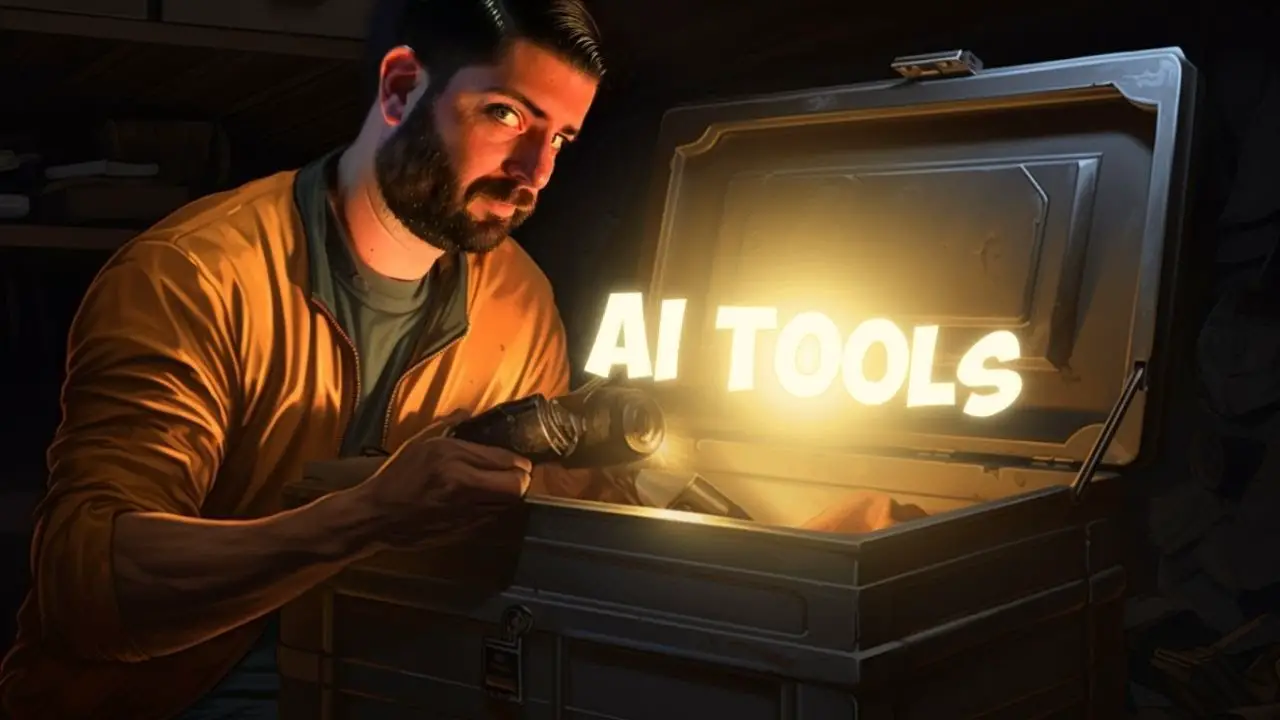Understanding AutoGpt and How to Create One: AutoGPT, gptAgent, Private GPT
October 20th, 2023

Understanding AutoGpt and How to Create One: AutoGPT, gptAgent, Private GPT
Understanding AutoGpt and How to Create One
In the realm of artificial intelligence and machine learning, AutoGpt is steadily gaining recognition for its potential to revolutionize how we communicate and automate tasks. This AI model is becoming an instrumental tool in creating more sophisticated technologies that enhance human-machine interactions. An understanding of AutoGpt, how it's developed, and how it can be used is vital for anyone aspiring to leverage this technology.
As today's digital world continues to evolve, being able to harness the power of advanced AI models like AutoGpt is increasingly important. It ushers in a new era of efficiency, enabling us to automate tasks and improve communication systems with unprecedented speed and accuracy. However, despite these advantages, developing an AutoGpt comes with its fair share of challenges, including handling technical difficulties and managing constant updates.
This growth in AI technology is reflected in recent statistics. According to Statista, global revenues from AI software are expected to skyrocket from approximately 10.1 billion U.S. dollars in 2018 to an impressive 126 billion U.S. dollars by 2025. The surge in revenue highlights the growing interest and investment in AI technology, and with it, models like AutoGpt.
So, what exactly is AutoGpt, and how can you create one? Let's dive into this fascinating world of AI and explore the ins and outs of AutoGpt.
What is AutoGpt?
The concept behind AutoGpt
AutoGpt finds its foundation in the realm of Artificial Intelligence (AI), specifically in the field of language models. To comprehend the concept behind AutoGpt, it is essential to delve into what artificial intelligence and language models imply.
Artificial intelligence refers to the simulation of human intelligence processes by machines or computer systems. These processes include learning, reasoning, problem-solving, perception, and language understanding. AI technology aims to create systems capable of performing tasks that would usually require human intellect.
At the heart of this technology are language models, which are a critical element in the world of AI. Language models are types of artificial intelligence models that provide a probability distribution over sequences of words or phrases. They are designed to understand, generate, and make sense of human language. One of the primary uses of language models is in natural language processing applications, such as speech recognition, machine translation, and question answering systems.
AutoGpt, therefore, is a sophisticated product of AI and language models. It's an advanced language model capable of generating human-like text based on the input it receives. The core principle behind AutoGpt lies in its ability to predict the probability of a word given its preceding words in a sentence, thus being able to compose coherent and contextually relevant sentences. This characteristic makes AutoGpt an incredibly powerful tool for various applications, from drafting emails or articles to creating conversational agents.
The Role of AutoGpt in AI Technology
AutoGpt plays a crucial role in the realm of Artificial Intelligence (AI) technology, particularly in enhancing communication and automating tasks.
In terms of communication, AutoGpt significantly boosts interaction efficiency by providing natural language processing capabilities. It's trained on a vast range of internet text, which enables it to generate realistic human-like text. This makes interactions with AI devices and software much more seamless and 'human,' leading to improved user experiences in areas such as customer service, where it can help manage routine queries.
As for automation, AutoGpt brings an impressive capacity for handling repetitive tasks. By setting up specific commands or scripts, you can automate tasks that would otherwise consume valuable time and resources. For instance, you could use AutoGpt to automate responses to frequently asked questions or automate content generation for social media posts or blog articles.
Moreover, this automation extends beyond simple tasks. With its advanced language model, AutoGpt can handle more complex procedures involving several steps, like data analysis and interpretation. This dramatically increases productivity while reducing the potential for errors that may occur with manual handling.
There are endless possibilities with AutoGpt within the rapidly evolving landscape of AI technology. Whether it’s enhancing communication channels or automating routine tasks, AutoGpt stands out as a pivotal tool in making AI technology more efficient and user-friendly.
How to create an AutoGpt
Preparation before creating an AutoGpt
Before diving into the creation of an AutoGpt, there are some vital prerequisites to put in place. One of the essential steps is learning Python. Python is a programming language often used in Artificial Intelligence (AI) due to its simplicity and versatile nature. It offers various libraries such as TensorFlow and PyTorch that are instrumental in AI development and machine learning.
There are numerous resources available online from where you can learn Python, including free tutorials, eBooks, and even YouTube videos. You can also enroll in coding boot camps or online courses offered by platforms like Coursera and Udemy. The key aspect is to understand the basics of Python, such as variables, data types, loops, functions, and classes among others.
Beyond knowing Python, it’s crucial to comprehend AI model training. This involves teaching your AI model how to make decisions based on data. Training an AI model requires a large amount of data, known as a training dataset. The model learns patterns and relationships within this data, enabling it to predict or make decisions when exposed to new, similar data. Understanding the principles behind AI model training will significantly contribute to the effective creation of AutoGpt.
Getting conversant with these two aspects - Python and AI model training - forms the bedrock for creating an AutoGpt. Successfully tackling these preparatory stages paves the way for a smoother journey in the actual process of building an AutoGpt.
Step-by-step process of creating an AutoGpt
Let's delve into the actual process of creating an AutoGpt. This involves three main steps: coding, testing, and implementation.
Firstly, coding forms the backbone of creating an AutoGpt. You'll need proficiency in a programming language such as Python, which is commonly used in artificial intelligence developments. The process involves writing scripts that instruct the system on how to automate tasks like writing emails, generating reports, or even drafting articles.
In the testing phase, you run the code in a controlled environment to check whether it functions as expected. This step is crucial for debugging any issues in the code and making necessary adjustments. It provides an opportunity to fine-tune the model and ensure its reliability.
Finally, comes the implementation stage. At this point, the tested AutoGpt model is integrated into the intended platform. This could be a software application, a website, or a digital tool. The implementation process may require further tweaking of the AI model to fit the specific needs of the platform.
Remember, creating an AutoGpt is not a one-off task. It requires continuous updates and maintenance to improve its functionalities and keep up with technological changes.
Benefits of using AutoGpt
AutoGpt brings a myriad of advantages to the table, transforming the way we interact with technology and contributing significantly to the growth and efficiency of numerous sectors.
Efficiency is one of the most prominent benefits that AutoGpt offers. By automating processes that were once manual and time-consuming, it boosts productivity and allows for more tasks to be completed in less time. It reduces the margin for human error and ensures consistency in task execution.
In terms of communication, AutoGpt remarkably enhances this essential aspect. It can generate human-like text based on the inputs it receives, making interactions smoother and more natural. This improved communication largely benefits customer service roles where interaction with customers happens primarily through written communication. More so, it enables seamless interaction with AI-powered systems and bots.
Moreover, AutoGpt plays a pivotal role in advanced automation. It takes automation to a whole new level by not only performing repetitive tasks but also learning and improving over time through machine learning algorithms. This advanced automation potential makes it an invaluable asset in fields such as data analysis, market prediction, and content creation, among others.
In essence, AutoGpt serves as an empowering tool that increases efficiency, enhances communication, and showcases the power of advanced automation, thereby revolutionizing how we utilize technology.
Challenges in Creating and Using AutoGpt
While AutoGpt offers numerous benefits, it's not without its share of challenges. One of the significant hurdles faced by developers is managing technical difficulties. Creating an AutoGpt involves a steep learning curve, with intricate coding and training processes. Often, developers need to have a robust understanding of Python and AI model training which can be daunting for beginners.
Another challenge comes in the form of constant updates. The field of artificial intelligence is rapidly evolving. With new advancements and methodologies emerging regularly, keeping an application like AutoGpt up-to-date requires continuous effort. Developers must stay abreast with the latest trends and technological changes, implementing necessary alterations to ensure their AutoGpt remains relevant and effective.
Lastly, handling complex tasks can also pose a problem. While AutoGpt is instrumental in automating processes and enhancing communication, it may struggle with more complicated operations. These might involve tasks that require human-like comprehension or subtle decision-making abilities. As a result, it's crucial to understand the limitations of AutoGpt and use it accordingly.
Despite these challenges, with the right knowledge and approach, creating and using AutoGpt can expedite many processes, making it a valuable tool in today's tech-driven world. An understanding of AutoGpt not only opens up the fascinating world of AI technology to us but also offers a glimpse into how our future communication and task management might evolve. Creating an AutoGpt, while it may seem daunting at first glance, is achievable with the right foundation in coding languages like Python and a strong grasp on AI model training. It’s important to remember, however, that despite its numerous benefits such as improved communication and advanced automation, AutoGpt comes with its own set of challenges, which include technical difficulties and constant system updates. As we step further into the era of artificial intelligence, embracing innovative tools like AutoGpt can equip us better for the journey ahead.
Other articles
September 11th, 2023
5 Ways to Avoid Symmetry in Midjourney
ck center in the middle of the frame … so how can we fix it? Well, there are at least 5 things you can do to help bring a more dynamic look to your generations! Did I miss any? Leave some tips in the comments, thanks! read more...
September 4th, 2023
epicRealism – THIS is the Model you WANT!!!!
istic Faces. Natural Light. read more...
September 18th, 2023
15 Best GPUs for Machine Learning in 2023
Gain insights into how this revolutionary tech is shaping various industries. read more...
September 6th, 2023
9 AI Tools You Will ACTUALLY Use
ideo. Get a free trial of Taplio at … read more...




